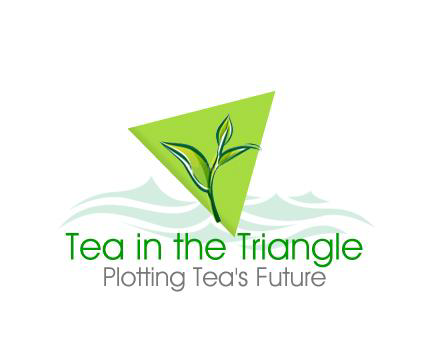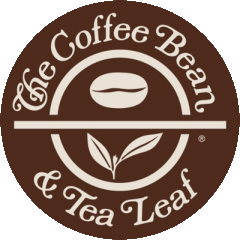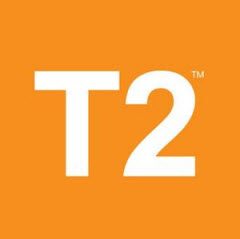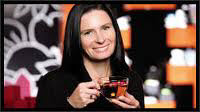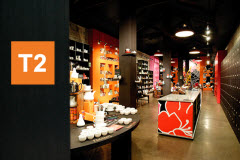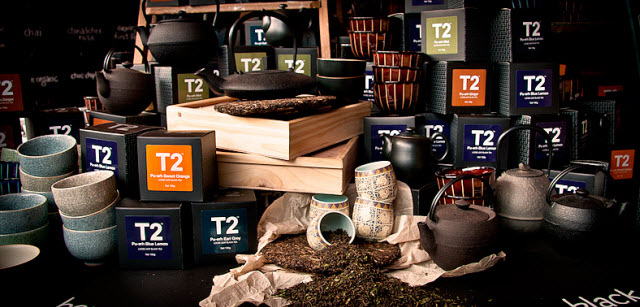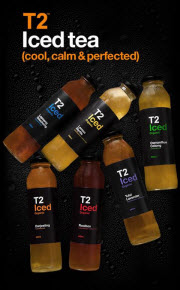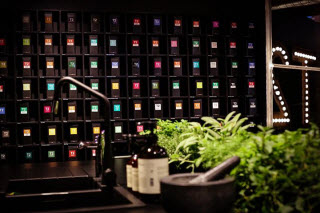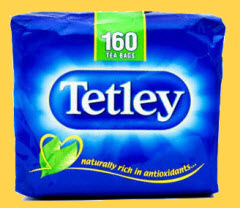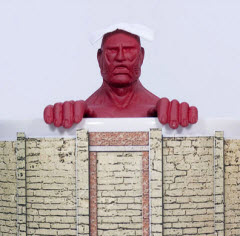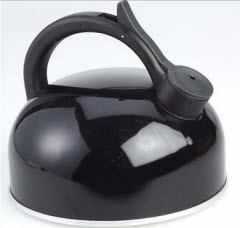What you need to start the week.
- Tea research points to memory benefits
- Price stable for India’s orthodox teas
- Tea Conference attendees consider future of tea
Tea Health
Medical researchers in China report that a cup of green tea improves memory, cognitive abilities and spatial awareness.
The study, published in the journal Molecular Nutrition & Food Research, was done on mice in a laboratory at the Third Military Medical University in Chongqing, China.
Lead researcher Yun Bai said “We ran tests on two groups of mice, one which had imbibed ECGC (epigallocatechin gallate, the catechin that is most prevalent in tea) and a control group. First the mice were trained for three days to find a visible platform in their maze. Then they were trained for seven days to find a hidden platform.”
The mice that were given EGCG found the hidden platform faster than the ones that were not, which suggested that EGCG boosted memory and learning by helping the mice recognize the object and improving their spacial memory.
“We proposed that EGCG can improve cognitive function by impacting the generation of neuron cells, a process known as neurogenesis. We focused our research on the hippocampus, the part of the brain which processes information from short-term to long-term memory,” Bai reported.
Medical News Today reported that the researchers discovered that EGCG helps to promote the making of neural progenitor cells, which are similar to stem cells, that can turn into many different kinds of cells.
Tea Import/Export
KOLKATA, West Bengal – Tea production has so far kept pace with India’s domestic demand stabilizing prices and insuring sufficient crop for export.
Higher prices for orthodox suggest the country is producing better quality tea.
Tea Board Chairman M.G.V.K. Bhanu told The (Calcutta) Telegraph that tea production is up by 25 million kilos through July.
“In the current financial year, I see tea prices to be slightly higher than the previous year, though not exorbitantly high. The price of exportable tea has increased 25 per cent. Orthodox tea prices will firm up. It is the high-quality tea that is going to cost more,” Bhanu told reporters during the 44th annual general meeting of the Tea Association of India.
Tea production reached 1,126 million kg in 2012, of which about 100 million kg was orthodox.
Arun N. Singh, chairman of the Indian Tea Association, said the year had so far seen CTC prices down by INRs 6-7 (9- to 10-cents) a kilogram while the orthodox variety was up INRs 25 (40 cents). About 20 million kg of orthodox tea has been produced this year compared to the first six months of 2012.
BOSTON, Mass. — The North American Tea Conference is the annual gathering of tea executives vested in tea.
A highlight is Thursday’s breakfast session organized by incoming Tea Association of the USA President Peter Goggi and John Snell, Director of Tea Procurement and Development at Mother Parkers Tea & Coffee, one of Canada’s thought leaders in tea
Breakfast organizers invited participants to answer a series of tough questions on the future of the tea industry.
“Our discussion last year revolved around economic sustainability and focused less on the human impact for the future,” Snell writes.”What lies ahead will have an uneven impact on people if we are not careful and mindful of our implementations.”
He challenged attendees to offer their collective wisdom in hope of instituting a broad discussion to bring about essential change.
Q: Given the record tea crops in the world today and the softening of markets in all but a handful of places, are we seeing the rise of an industry dichotomy, where producer’s needs to be more efficient actually has a deleterious effect on the market? Is efficiency creating an untenable over supply or is this just a blip on an otherwise northerly trajectory?
If rising costs in origin countries continues to erode tea industry margins, how does the world expect producers to address this without harming returns to their workers, green leaf small holders and shareholders?
My assumptions: Points of view vary among stakeholders. I answered from the vantage of a tea retailer and wholesale supplier to tea vendors. I make two assumptions. The first is that the plantation model as it currently exists is unsustainable. The second is that the industry must see that tea supply remains well below demand until the price of tea doubles.
My belief: The tea industry from seed to shop must take steps to insure demand outpaces supply, initiating an upward climb in commodity prices.
My reasoning:
Oil now trades at a relatively stable $100 a barrel that was painful to achieve. The resulting equilibrium in the market insures sufficient revenue for production and sufficient incentive for innovation such as oil-sands exploration and spurring alternative energy produced from wind and solar and geothermal sources. Commodity tea should find a similar price point to insure that the existing plantation system, which is currently unsustainable, has the opportunity to evolve.
Selling commodity tea at double the current rate will make a difference. In the last five years rubber prices doubled. Wheat prices doubled. Sugar cane prices more than doubled. Cultivating the right cash crop in the right locations is critical. When coffee and tea producers in Indonesia weighted the profitability of tea against several cash crops tea, output declined.
How will the cultivation of tea evolve? As a first step, producers should either abandon marginal tea land or invest enough to make them profitable. Start by replacing aged stock with higher quality tea at improved yields. Introduce mechanization and soil and water conservation with greater emphasis on biodiversity and less reliance on mono-agriculture; irrigate to preserve tea land in prime growing regions that are drying due to changing climate; explore less labor intense methods of cultivation, such as applying organic fertilizer via irrigation to lower labor expense; educate small holders in best practices; and establish standards that emphasize quality over quantity. Consider the possibility that sophisticated tea farming on a small scale, 25- to 500-acres (as seen in wine country), may ultimately prove more sustainable.
Pricing is arbitrary without a futures market and with no benchmark grade of tea. Coffee is undergoing massive swings in pricing, but the ability to hedge has enable the largest suppliers to operate without devastating effect.
A universal benchmark could evolve from guidelines for quality within a country as India has done. The India Tea Board’s efforts to train groups of small holders and a recent decision to publish average prices strengthen this segment by help prevent small holders from falling prey to unscrupulous middle men.
Ultimately tea is traded among companies not governments. Companies that profit will pay more.
Demand is growing, but even more critical, consumers are more discerning and willing to pay more for tea. Consumption is rising at twice the rate of global production which is estimated at 1.87 percent annually for the next 10 years according to the United Nations’ Food and Agriculture Organization (2012). Consumption in 2010 grew by 6 percent. In Canada sales from specialty tea, which amounts to about a third of volume, exceeds those of commodity tea. In this I see hope.
Q: Are consuming countries responsible for this quandary and should minimum pricing be established or should market economics be allowed to marginalize certain growers and their communities?
My answer: Multinational tea suppliers are closely aligned with the consuming countries. When the greatest profits lie in cheap-cheap tea, these companies exert their influence politically and within the market to deliver cheap-cheap tea. When demand shifts to higher quality tea, these same corporations will meet that need. Low-as-you-can-go prices are not the inevitable consequence of global capitalism. Policy is complicated by the fact that governments in producing countries encourage the labor-intensive production of tea, staunchly defend the auction system, and in some instances even litigate against mechanization. The pursuit of desirable hard currencies in the third-world has fueled the rush to boost production, knowing full well that overproduction will result.
When major producers* meeting in Colombo in January 2013 created the International Tea Producer’s Forum they were mimicking the Organization of Petroleum Exporting Countries without production quotas and without China. Cartels are invariably shaky structures but trading tea at $2.75/kg or less ensures the entire plantation system remains at risk. Prices are rising. India has seen a 40 percent increase in the past five years. Average prices were $2.25/kg in 2012. Success depends in great part on whether countries agree to production quotas and whether the industry can establish a better alternative than price setting at auctions.
There is no question that paying higher prices for tea in consuming countries will bring relief.
Perhaps our greatest hope is the emergence of a massive middle class in BRIC. Producers that add value to meet consumer demands for convenience with products like Snapple; blending mid-range tea with fruits and florals like Gold Peak flavored teas and the popularization of premium at retail by chains such as T2 and Teavana and DAVIDsTEA (should) lead to better prices for producers. In the past 12 months investors and large corporations including Unilever and Starbucks put $1 billion into the expansion of tea retail. The introduction of packaging that makes tea a popular gift (China) and the abandonment of tariffs that discourage tea imports to protect native suppliers will all play a part.
[*Signatories: India, Kenya, Colombo, Sri Lanka, Malawi and Rwanda produce 1.9 billion kilos which is more than 80 percent of the world’s tea – mainly CTC black. An executive committee is to be named in November. The effort draws attention to the plight of tea producing countries but seems unlikely to succeed. A comparable effort 80 years ago led by Finlays raised prices by curbing exports for a time but today there are thousands of sellers to fill a self-imposed void. It seems unlikely producers will accept a quota. Tea yields are unpredictable and the finished product grows stale within a year losing its value. Growers cannot store tea awaiting a more favorable price. You have to sell what you produce.]
Tea Biz serves a core audience of beverage retailers in the belief that insightful journalism is one of the most effective forms of professional education. We write about what matters along the entire supply chain, emphasizing trustworthy sources and sound market research while discarding fluff and ignoring puffery. If there is nothing we can add to your understanding of the issue, we leave it alone.
Tea Biz posts are available to use in your company newsletter or website. Purchase reprint and distribution rights for single articles or subscribe. Custom content available. Click here for details.

